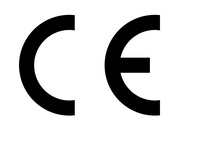This article looks at the implications of European Union (EU) electrical directives when using Rosahl membrane dehumidifiers . It also covers CE marking.
To sell electrical and electronic goods in the EU, they must follow the relevant Directives. For industrial electrical equipment the two most important are the Low Voltage Directive (LVD) and the Electromagnetic Compatibility Directive (EMC). Additionally, the Restriction of the use of certain Hazardous Substances (RoHS) also applies to electrical and electronic equipment.
Further, it considers registration, evaluation, authorisation & restriction of chemicals REACH regulations adopted from the European Chemicals Agency (ECHA). Then finally, the new Conflict Materials regulations that take effect on 1 January 2021.

Rosahl membranes are out of scope for the LVD and EMC directives. Under EU regulations, the provision of CE marking or declaration of conformity under these directives is neither intended nor permitted.
The membranes comply with RoHS as well as the REACH Directives.
Table of Rosahl membrane dehumidifier compliance with EU Directives
Category LVD EMC RoHS REACH CE Marking
Directive 2014/35/EU 2014/30/EU 2015/863/EU 1907/2006/CE CE Marking
Comment Out of scope Out of scope Compliant Compliant Not required
Link to Documentation
Declaration of Conformity Declaration of Conformity
Low Voltage Directive (LVD)
The LVD (2014/35/EU) ensures electrical equipment within prescribed voltage limits. It bascially provides a high level of protection for European citizens and this version has been applicable since 20 April 2016.
The LVD covers health and safety risks on electrical equipment operating with defined input or output voltage. Overall, it applies to a wide range of electrical equipment for both consumer and professional usage.
Rosahl and LVD
Rosahl membranes are not required to meet the LVD because they are out of scope according to Article 1. Specifically, the membranes are out of scope because they operate at a voltage of 3V D.C.
Article 1 states:
For the purposes of this Directive, ‘electrical equipment’ means any equipment designed for use with a voltage rating of between 50 and 1 000 V for alternating current and between 75 and 1500 V for direct current, other than the equipment and phenomena listed in Annex II.
Electromagnetic compatibility Directive (EMC)
The EMC Directive (2014/30/EU) ensures that electrical and electronic equipment does not generate, or is not affected by, electromagnetic disturbance. The EMC directive limits electromagnetic emissions from equipment to ensure that, when used as intended, such equipment does not disturb radio and telecommunication, as well as other equipment. The directive also governs the immunity of such equipment to interference and seeks to ensure that this equipment is not disturbed by radio emissions. Thus, its main aim is to regulate the compatibility of equipment for EMC.
Rosahl and EMC
Rosahl membranes are out of scope of the European EMC Directive according to Article 1 Section 2(d).
Article 1 Section 2(d) states. This Directive shall not apply to equipment the inherent nature of the physical characteristics of which is such that
(i) it is incapable of generating or contributing to electromagnetic emissions which exceed a level allowing radio and telecommunication equipment and other equipment to operate as intended; and
(ii) it operates without unacceptable degradation in the presence of the electromagnetic disturbance normally consequent upon its intended use.
CE marking
CE marking on a product is mandatory where allowed by the relevant EU Directive. Hence, it proves the product meets the legal requirements of the Directive allowing its placement legally on the market in any European member state. Significantly, not all products must have CE marking.
Rosahl and CE marking
Neither the LVD no EMC directives apply to Rosahl dehumidifier membranes. The provision of CE marking or a declaration of conformity under these directives is neither intended nor permitted.
Registration, Evaluation, Authorisation & restriction of Chemicals (REACH)
The REACH Regulation 1907/2006/EC was set up by the European Chemicals Agency (ECHA) wherein the substances listed do not exceed 0.1% wt. % in Substance of Very High Concern (SVHC). It is a system for controlling chemicals in the EU and became law in the UK on 1st June 2007. Although not an Electrical Directive, it applies to all electrical equipment placed on the European market.
Rosahl and REACH
Rosahl membranes also meet the requirements of REACH Regulations and hence the manufacturer has produced a Declaration of Conformity to the REACH Directive.
Conflict materials
What are conflict minerals?
In politically unstable areas, the minerals trade can finance armed groups, fuel forced labour and other human rights abuses. For instance, this also supports corruption and money laundering, hence this new rule.
These so-called ‘conflict minerals’ such as tin, tungsten, tantalum and gold, also referred to as 3TG. They occur in everyday products such as mobile phones and cars or in jewellery.
Moreover, because of the way they come to market, it is difficult for consumers to know if a product they have bought is funding violence, human rights abuses or other crimes overseas.
New EU Conflict material regulations covering gold; tin; tungsten and tantalum take effect on 1 January 2021.
Rosahl and conflict materials
Neither the maker of Rosahl, nor its suppliers use materials from sources identified in the new regulations. A declaration is available on request.
